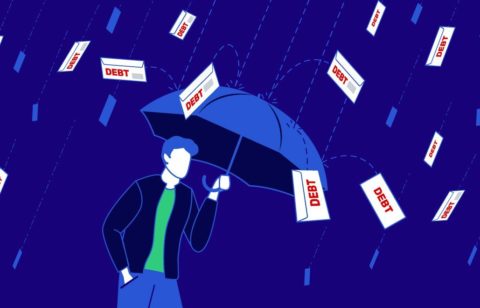There are various programs that you can use to get out of your debt situation. However, the challenge lies in how you will choose the right debt relief program for your unique financial situation.
In some cases, people do not really need any form of debt reduction or a special formula to get out of debt. These are the people who have the income to comfortably support their debt payments while staying true to their monthly expenses. Sometimes, all they need is a structured payment plan that will help them pay down their credit obligations.
If that is your intention, then you may want to consider either the snowball or avalanche method to help solve your debt problems.
Similarities and differences between the two debt relief options
There are various similarities and differences between the two options. To help you choose, let us discuss both lists.
Similarities
The similarities between the two options are concentrated on the process by which they can get you out of your debt situation. Here are the steps that you need to follow to achieve debt relief through either of the methods.
-
Create a debt list. It all begins with a debt list. On both methods, you have to list the different accounts that you have and rank them based on priority
-
Know how much debt payment fund you can afford. This can be done if you create a budget plan. Know the amount that you can spare for your debts. If you can limit your expenses, you can actually grow your debt payments and pay off your debt faster.
-
Distribute your funds into your debts. First thing that you do is to satisfy the minimum payments on all your debts. Even if it is impossible to quickly reduce all your debts, you need to pay at least the minimum to avoid late penalty charges. Once you have assured that all debts will be paid the minimum, you will take all the extra money and put it towards the priority debt. This will help you complete payments on the first debt faster.
-
Transfer an extra money into the next priority debt. When the first debt is completely paid off, put the freed amount in the second priority debt. Once that is completely paid, you transfer everything to the third. This goes on until you finish paying off all the debts. Make sure that while you are doing these, you continue to pay the minimum for the other debts that are not a priority.
Differences
The difference between the two debt solutions is that the snowball method prioritizes the debt with the lowest balance while the avalanche method puts the one with the highest interest on top. Let us explore them further.
-
Prioritizing the lowest balance. When you use the snowball method, you will rank the debt according to their balances. The lowest will be placed on top of the list. The main goal here is to provide yourself with an early success that involves experiencing the complete payment of a debt. By doing so, you are motivating yourself to continue with the other debts on your list. However, this may take longer and could cost you more when the high interest debts are put way below on your list.
-
Prioritizing the highest interest. When you prioritize the highest interest, that debt solution is known as the avalanche method. The idea here is to get as much savings as you can by eliminating the high interest first. That way, you don’t have to waste too much money paying your creditors the interest amount. Not only that, this method usually enables you to get out of debt faster. However, if the high interest debt has an equally big balance, it may take longer for you to experience success – which can be a bit discouraging.
How to choose between snowball and avalanche methods
Of course the big question is, how do you choose between the two options? It actually depends on your personality. Here are some important points to consider.
You should select the snowball method if:
-
You are more emotional than logical.
-
You need the early success to motivate yourself.
-
You are the type who usually do not stick to the plan.
-
You want a simple plan to follow.
-
Your debts have varying balances.
One the other hand, choose the avalanche method if:
-
You are more of a logical thinker than you are an emotional one.
-
You have the discipline and self control to complete the plan.
-
You are more concerned about the savings that you will get in the long run.
-
You want to keep the money wasted on the interest small.
These two options will not involve a debt professional so you need to make this choice alone. It pays to come up with a payment plan that will help you stick to your debt relief option. There are online planners and calculators that you can use – like those found on Money.com. Use these tools and equip yourself with the knowledge that will get you out of your debt situation.
Regardless of what you choose between the two, you must stick to the plan so that you can achieve debt relief faster. In the end, that is the important factor in achieving debt freedom.
To help you with tips on how to deal with credit card debt, look at this video.
http://www.youtube.com/watch?v=d7mOImjy0y4







